
You can support Terra Relicta by donating! Please, do so, and thank you!

Interview with: Hristo Gospodinov
Conducted by: Michael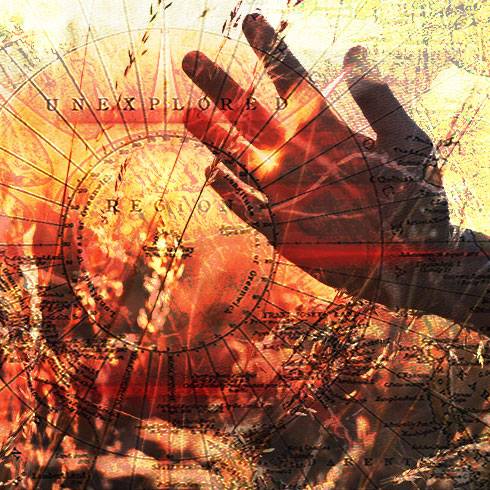 Shrine has become a well known name in dark ambient circles over the years. With Ordeal 26.04.86 being the third Shrine album to be released on Cyclic Law, Hristo Gospodinov the man behind Shrine is bound to make waves again with this release. In fact, Ordeal 26.04.86 may well be the greatest acheivement yet by Shrine. Packing a vivid story of the Chernobyl disaster and cover art by the brilliant graphic artist Dehn Sora, Shrine have all the ingredients to suck listeners in. Once you have heard this album it will stick with you. Shrine has dug deep into the psyche to find the most vivid and memorable way to showcase this story through the lens of dark ambient. I was lucky enough to catch up with the man behind the project for a very informative interview!
Shrine has become a well known name in dark ambient circles over the years. With Ordeal 26.04.86 being the third Shrine album to be released on Cyclic Law, Hristo Gospodinov the man behind Shrine is bound to make waves again with this release. In fact, Ordeal 26.04.86 may well be the greatest acheivement yet by Shrine. Packing a vivid story of the Chernobyl disaster and cover art by the brilliant graphic artist Dehn Sora, Shrine have all the ingredients to suck listeners in. Once you have heard this album it will stick with you. Shrine has dug deep into the psyche to find the most vivid and memorable way to showcase this story through the lens of dark ambient. I was lucky enough to catch up with the man behind the project for a very informative interview!
Michael: First off, congratulations on the release of your latest album, Ordeal 26.04.86. It seems to be getting a great reception so far among zines as well as fans! Are you happy with the reception thus far?
Hristo: Thank you, Michael. Yes, I'm happy with the reception of the album, but I can't say it wasn't expected. The theme of this album, the quality of the artwork, the sound quality and the complexity of the music, all together are a "recipe" for a great release. Being on a label of the caliber of Cyclic Law is a major factor too, of course.
Michael: You stated in the album blurb, that this was the first time you went into an album concept first, music second. Would you care to elaborate a little on this? Did this make the process easier for you? Do you prefer one way over the other?
Hristo: It was just an idea that came to me some 10 years ago and over the last year I had the time and desire to finally start working on it. I have had other spontaneous ideas about music over the years, but they all got abandoned, and this one came to life somehow. I guess my health situation the last year played a major role in this decision. I don't think the process of conceptual realization has anything to do with how easy or difficult is the work on a specific release in general. The difficulty level is entirely technical and is 100% music production related, so it doesn't matter if I have or have not a concept prepared. The only difference is that if the concept comes first, it will affect the music less or more, while if the music is first - it will affect the concept.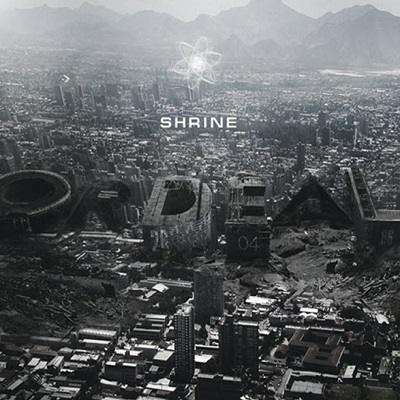 Michael: You have mentioned that you were very near to Chernobyl when this incident took place in '86. Would you like to tell us a bit more about living in this area, and how this monumental nuclear accident ended up changing your life?
Michael: You have mentioned that you were very near to Chernobyl when this incident took place in '86. Would you like to tell us a bit more about living in this area, and how this monumental nuclear accident ended up changing your life?
Hristo: Actually I never said that. In the press release info I stated that "I witnessed the nuclear sunburn effect", but this is not the same thing. Bulgaria was the last country in the way of the radiation cloud in south-eastern direction back in 1986. There is a long mountain range from west to east here that splits the country into two, and back then the cloud system reached the mountains and dissolved there. Unfortunately, I was born and grew up in the northern part so the "hot" rain got me. Technically, the cloud had weakened at this point and the concentration of "hot" graphite particles in the sky became somewhat lower a week after the accident, but due to the strength and duration of the informational blackout it turns out that Bulgarians have taken the highest dose next to the people in the former USSR. At least this is what I read on the internet. I don't know how these calculations are made since the whole research about the fallout effects in this country is still classified 30 years later. Probably we will never know what really happened. I was only 10 years old so I don't remember a lot, but I remember that the kids who dug into the sand at playgrounds suddenly got their skin red. That was a nuclear sunburn.
Michael: Have you been paying much attention to the stories coming out of the Fukushima reactor situation? Do you think Fukushima has been a wake up call to the world, or are we again putting hubris over reason and ignoring the warning signs?
Hristo: No, just what was in the news. The Fukushima accident never interested me since it wasn't a man-made event. I only wonder if there was an informational blackout in the wake of it, in the same way as after the Chernobyl accident.
Michael: I mentioned in my review of Ordeal 26.04.86 that I felt a lot of similarities between this album and some works by Bad Sector. Would you agree with this comparison? Has Bad Sector had much influence on you as a musician?
Hristo: Bad Sector is a very interesting project and I'm following it closely since the day I discovered it. Some of his music I don't like (it is just way too chaotic for my taste), but there is also music that I find completely genius. Can't really say this project is an influence to me as a composer, but as a sound designer there might be an influence... To me, Bad Sector's sound is the most advanced I have ever heard. I think it's light years ahead of many other artists. And the guy builds his own synths and modulation devices, it's amazing.
Michael: Dehn Sora, helped out with the cover art for Ordeal 26.04.86, how much freedom did you give him in the concept? Was it a very collaborative cover or did you let him take the lead?
Hristo: Most work on the cover art was done by Vincent. He came up with two ideas and I chose the one you can see on the release, it was about building the album title in 3D upon some derelict urban landscape. He completed the task in a few weeks, but the finished work wasn't including any typography. Of course it was looking great as it was, but I decided it's bad idea to release this with no project name on the front cover and I asked Vincent to send me the working file so I can implement my own idea about that. While working on the front/back typography, I also created those atomic models on the front, back and inside covers. The one on the front is rather a generic decoration, but the others include exact recreations of an uranium atom. In addition to that, I also designed the "on-disc" artwork. Of course big thanks go not only to Vincent, but also to Frederic who arranged the whole thing. Previously I have never been in touch with Vincent myself.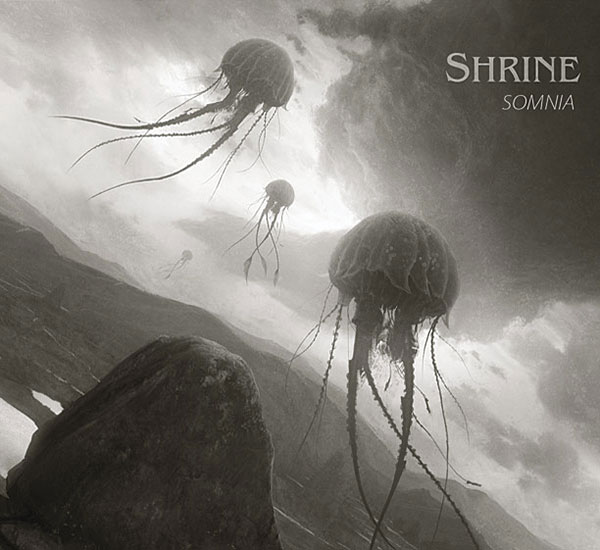 Michael: Speaking of art, across each of your latest 3 album covers on Cyclic Law, I can see a true love for art. How much influence does graphic artwork have on your life? Are you a graphic artist yourself?
Michael: Speaking of art, across each of your latest 3 album covers on Cyclic Law, I can see a true love for art. How much influence does graphic artwork have on your life? Are you a graphic artist yourself?
Hristo: Let's say I am a wannabe graphic artist :) I was drawing and painting a lot when I was younger (before computers) but my talent is just not strong enough to be a real graphic artist. I also worked as a graphic designer for a few years but finally turned to web development and programming. However, every now and then I'm returning to graphic design. On every cover and disc artwork for every SHRINE release on Cyclic Law I have done some graphic work - typography, vector design, textures, etc. My current publisher is giving me the freedom to create or add anything I want to the cover artworks. Which is a great thing. It wasn't like this 10 years ago with my previous publisher.
Michael: I've only been a listener of this genre for a handful of years now, but I feel that there is a bit of an increase in momentum over the last few years. How do you consider the current state of dark ambient?
Hristo: Well, the scale may be different, but this is just a music genre and it is developing as every other music genre. Sooner or later it will be flooded with so much music that you can't distinguish one from another. And this is especially true for a genre where all you need to get you started is just a computer with some software or a guitar packed with delay and reverb pedals. You don't need other musicians to help, you don't need a recording booth, you don't even need to leave your bedroom in order to create something. Of course there always will be some highlights in the genre. And I guess that's what most listeners do - look for the highlights.
Michael: Along the same topic, I wonder how you felt about Cold Meat Industry and the evolution of the genre since its demise?
Hristo: Cold Meat Industry is the essential core of this genre. In the "golden" period of dark ambient (which was in the 90s) this whole field was almost exclusively associated with CMI projects. It was just those early CMI artists being so incredible, every one of them was a separate universe on its own. They all had a very distinctive sound, I never confused one of those projects with another - a problem I often have with newer artists. Of course it's a sad thing that such an iconic label is gone now, but to be honest, in the late period of the label the quality of the music released there dropped in general, or at least this is what I think. Anyway, I'm wondering if Roger will decide to resurrect the label at some point. While not very likely, this is not impossible I guess.
Michael: What are your feelings on dark ambient live performances?
Hristo: Can be very good, or really bad. Given the performing project is good, there are plenty of other factors of major significance - the sound system, the venue, the audience, etc. I have had 10 live performances with SHRINE so far and I can say that I have experienced all kinds of sounds - from super good to truly awful and the difference is tremendous. After a gig with bad sound I always had that feeling that I wasted my time (considering the fact that preparing a set for a live gig is a lot of work, at least for me). Other than the sound, I think dark ambient should be performed live indoors only, never outdoors, and the audience should be sitting. A standing crowd with beer bottles talking loud can be really annoying.
Michael: If you could open for any musician/band in the the world past or present, who would you pick?
Hristo: I already have opened for the best :) It was that raison d'etre gig in Sofia back in 2006. Back then I had no idea how to play ambient live so what I did was very far from my current standards of sound and improvisation. But at the time I was quite excited about my own performance and the audience liked it. I guess the whole geekery thing matters only to music producers, the average listeners don't seem to pay much attention to that, they stick to just the music.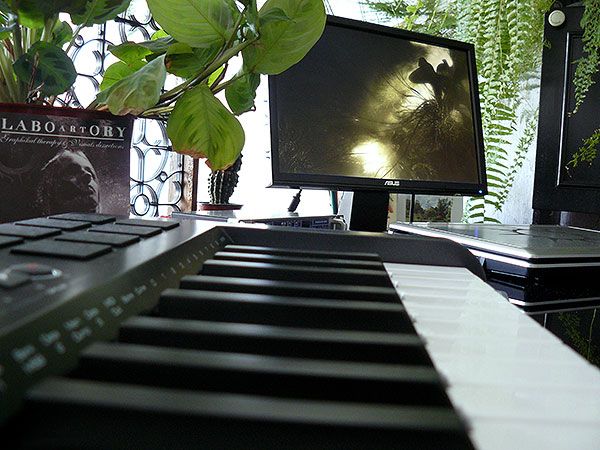 Michael: Would you care to describe your studio space a bit? Any favorite instruments, chairs, software?
Michael: Would you care to describe your studio space a bit? Any favorite instruments, chairs, software?
Hristo: Oddly enough, my studio is currently split into two, between my hometown and the city where I currently live. My rented place here is not acoustically friendly, and is pretty narrow too, so I keep here only equipment that is needed for composing music. The rest of the gear for mixing and mastering is in my apartment back in my hometown. So my last album was actually composed in one place and mixed and mastered in another.
All audio synthesis you hear in my music is created entirely with software. I personally think that hardware keyboards and samplers are anti-creative, at least this is how I feel about them. I used some in the past and I always got bored quite quickly. The hardware tool draws you into some kind of usage pattern, and it turns out you can use it only this way and that's it. There is no such problem with software tools though, because the possibilities of modulation are highly varied and often are beyond reality. I can think of several tools that have no hardware analog at all, their way of processing sound just doesn't exist in the physical reality. In my opinion the only truly creative hardware synths are the big modular synthesizer stations but they are crazy expensive and they take a lot of place. I don't own any real music instruments except for two guitars (acoustic and electric), but I think the last time I used them was on the recordings for Somnia and that was quite a long time ago. There is one analog bass synth lying around though, which is to be used at live performances, eventually.
As for the processing hardware, I down-mixed Ordeal 26.04.86 in analogue through some multi-channel converters, then processed it in real time with a harmonic enhancer (the same box I used on the recordings of Nihil, a pre-mastering tool of some sort) and recorded it in digital back on my computer via another converter. It's pretty much the same approach as on the previous album, except for the analog mixing. Once recorded, I do the rest of the post-mix processing (mastering) with software. You can find some info about the gear I'm currently using on my website here.
Michael: Many dark ambient musicians like to make a sort of ritual out of their live and recording sessions. Do you have an meditations, incense burning, or anything similar which prepares your mind for creation?
Hristo: No offense, but I find these sort of things ridiculous (not meditation in general of course, but rituals). Perhaps if it's about a project which is profoundly ritual, like some of the artists on Aural Hypnox - Zoat Aon, etc., then it will feel real, but in general I'm quite skeptical about this. It usually feels ridiculous and it breaks my concentration at live performances.
Michael: How long have you been a fan and/or musician of dark ambient? What was the first artist to really open your eyes to the genre?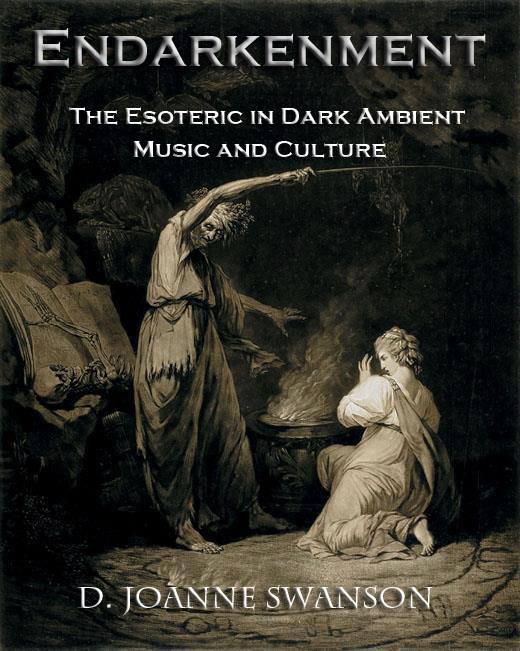 Hristo: 15 years now. The album that converted me to ambient in general was Enthraled By The Wind Of Lonelienes by raison d'etre and most especially its opening track - "The Awakening". I already told this story in detail in SHRINE's interview for the book Endarkenment: The Esoteric in Dark Ambient Music and Culture by Danica Swanson, so you can read the whole interview once the book is released or you can read that part (about how I turned to ambient) right now on the Endarkenment: The Esoteric in Dark Ambient Music and Culture official Facebook page here, or on SHRINE's Facebook page here.
Hristo: 15 years now. The album that converted me to ambient in general was Enthraled By The Wind Of Lonelienes by raison d'etre and most especially its opening track - "The Awakening". I already told this story in detail in SHRINE's interview for the book Endarkenment: The Esoteric in Dark Ambient Music and Culture by Danica Swanson, so you can read the whole interview once the book is released or you can read that part (about how I turned to ambient) right now on the Endarkenment: The Esoteric in Dark Ambient Music and Culture official Facebook page here, or on SHRINE's Facebook page here.
Michael: Do you have any other musical projects that you would like to mention?
Hristo: No, I don't run any other music projects, this one takes enough time.
Michael: Now that you have released your latest album, what happens next? Do you plan to take a little break or will you hop right back into writing more music?
Hristo: I'm not sure what's next. Perhaps it's a time for a step away from dark ambient. Ordeal 26.04.86 has a lot of experimentalism in it and I feel I want to go further in this direction, into a more experimental music and sound design, away from the genre. The problem is, that this album raised the bar extremely high for me. I realize it will be really hard to create something this sophisticated once again, probably impossible. So the future is unclear, but at least I feel quite motivated to continue with music composing. I remember there was a long period of time, some time after Nihil was released, that I was completely demotivated to continue with SHRINE, to the point that I thought this was the end and the project is going down. So maybe you are right about the increased momentum within the genre right now.
Michael: Do you have any interesting hobbies outside of Shrine?
Hristo: Yes, I do - snowboarding. It is something I do love, a whole new meaning to the otherwise dull and boring winter season.
Michael: Thank you so much for your time Hristo! I'll leave the final words to you, to say anything else you might like fans to know about you, which I haven't covered here.
Hristo: Thank you, Michael, and thanks to everyone who spend some time to read this interview. Support the artists you like in a way you can afford, and stay away from trends. See you around.
Shrine links: Official Site, Facebook, Bandcamp